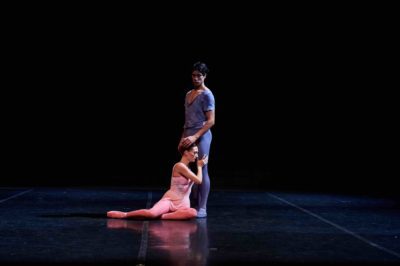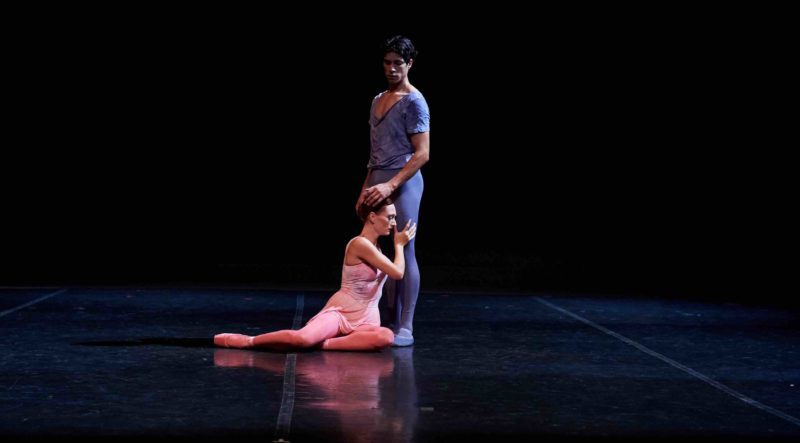INTERVIEW: New York Theatre Ballet to bring Tudor, Clarke pieces to 92Y

New York Theatre Ballet is set to stage works by the legendary choreographer Antony Tudor at 92Y Harkness Dance Festival Feb. 24-25. Included among the pieces will be Tudor’s Soirée Musicale, the pas de deux from Romeo & Juliet and Les Mains Gauches. The dances, originating from the 1930s, 1940s and 1950s, will be paired with Martha Clarke’s Nocturne and The Garden of Villandry to make an evening of unique movement and artistic interpretation.
“Well, it’s a very interesting program,” said Diana Byer, artistic director and founder of New York Theatre Ballet. “We’re doing three of the great English choreographer Anthony Tudor’s work, and it’s three of his lesser-known works, which, I think, in their own right are little jewels. … Then we were asked to do Tudor and identify a contemporary choreographer who was influenced by Tudor, so we chose Martha Clarke. And we’ll be doing two of her works, Nocturne and Garden of Villandry, and she went to Juilliard where Tudor was an instructor. So she was influenced quite a bit by him, so I think it’ll be quite an interesting program to see those two choreographers together, which I don’t think has ever happened before.”
Byer said the works are gestural but not athletic, and they require superb acting skills. The dancers of New York Theatre Ballet are required “to be a real person,” as the artistic director put it. There are no big jumps, excessive turns or mini pirouettes. Byer said the pieces are “real dancing with great character.”
“In those ballets, you can’t be a dancer who is trying to be a person,” she said. “You have to be a person who happens to dance. … It’s very difficult to do that on a stage, so it’s quite demanding.”
New York Theatre Ballet is a busy company in the Big Apple. At the same time the dancers are rehearsing for the Harkness Dance Festival, they are also preparing other works for New York Live Arts in early March and Cinderella at the Schimmel Center at Pace University March 12.
The company is also adjusting to their recent move from Madison Avenue Baptist Church on East 31st Street to St. Mark’s Church-in-the-Bowery on East 10th Street. They lost their previous space after the building was sold, and now they need to find new energy downtown.
“It’s been very welcoming,” Byer said. “It’s quite a bit smaller, which has been really difficult for us, but we’re working within it. And the people here are wonderful and generous, and it’s a place that supports diversity and the arts and just what a church should be doing. They’re very inclusive of everyone. To me, that’s what religion should be.”
Dancers with New York Theatre Ballet are on contract with the company, and when an opening emerges, Byer often looks to their own school for a good candidate. However, after that search, she’ll host an audition to see who might join the choreographic family.
Newcomers, in her mind, should have appropriate technique and skill. Also, the prospective dancers need to have new ideas and be open to correction and coaching. “Dancing is an art form, which means that it’s all about being generous to the audience,” she said. “It’s a certain kind of personality that you don’t find very often, and it’s about the work and about what you bring to the audience. It’s not about promoting yourself. I look for dancers that understand dancing and not just tricks because we’re not an athletic company. We’re a dance company.”
She added: “What we usually do in our programming is [produce] young, emerging choreographers that I think really show talent and should be promoted, and then we re-stage great masterpieces that are suitable for a chamber ballet company — great masterpieces by the great master choreographers. So we put them together in the same program, which I think is an interesting programming concept.”
This vision is clear, but the funding for arts institutions like New York Theatre Ballet can be difficult. Also, with newfound fears of government support being cut for dance companies, Byer finds much of her time fundraising. “The challenge is finding funding to be able to do the programming because when you’re a small company like we are in a city that has two of the greatest ballet companies in the world and many of the greatest modern-dance companies in the world, a company like New York Theatre Ballet can tend to slip through the cracks in the funding world,” she said.
Still, there’s a certain satisfaction that comes when the team can look out after a successful performance and see the audience, some of them quite young and new to professional dance, leaving with an appreciation for the experience they just had. Byer hopes the pieces fill their spirit.
“I want them to [leave] where they’re touched inside by Tudor’s work and by Martha’s work because the work is about real people,” she said. “It’s about the human condition, so I’m hoping that they leave with that kind of fulfilled spirit and not just looking at the façade of dancers and their muscular bodies kind of thing, that it moves them, the tragic story of Romeo and Juliet moves them. It’s kind of a life lesson. … I don’t want them to come away saying, wow, this is that good technique. Look how many turns he did. I want them to come away discussing what they felt, how they were moved by the dancing and by the music.”
By John Soltes / Publisher / John@HollywoodSoapbox.com
New York Theatre Ballet will present works by Antony Tudor and Martha Clarke at 92Y’s Harkness Dance Festival Feb. 24-25. Click here for more information and tickets.

